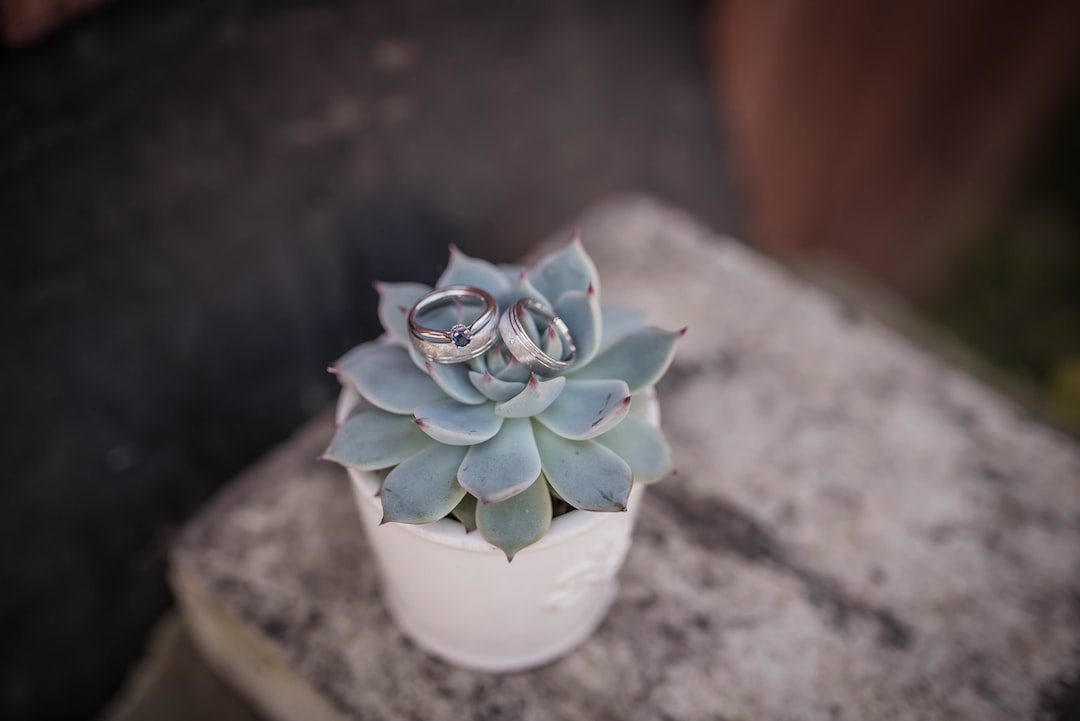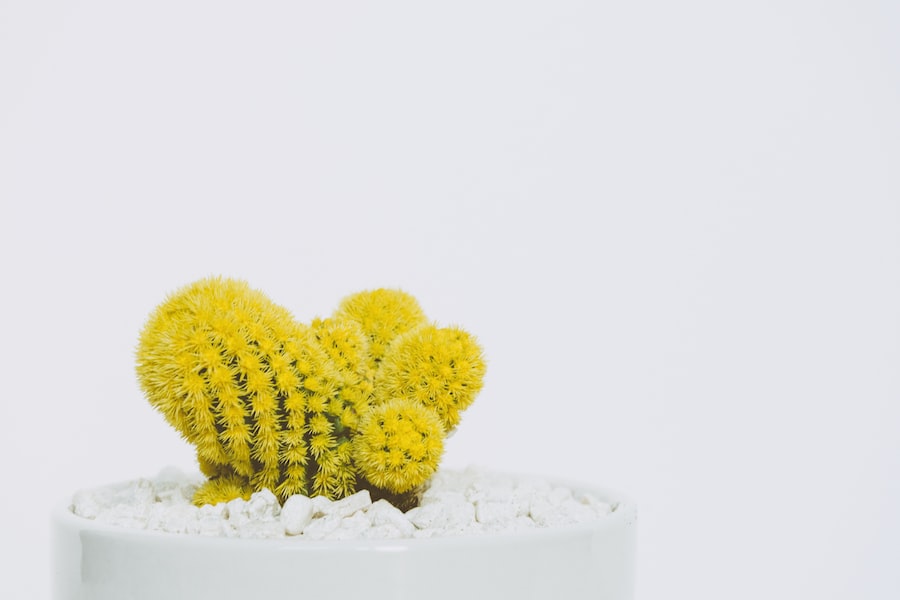Growing Asparagus in a Pot: A Guide to Deliciously Fresh Homegrown Spears

Growing asparagus in a pot is a great way to enjoy this delicious and nutritious vegetable, even if you have limited space or poor soil conditions. There are many benefits to growing asparagus in a pot, including the ability to control the soil conditions, easy access for maintenance and harvesting, and the ability to move the plant to a more suitable location if needed.
Container gardening is a popular option for those who don’t have access to a traditional garden plot or who want to grow plants in a more controlled environment. It allows you to grow plants in containers, such as pots or raised beds, which can be placed on a patio, balcony, or even indoors. This method of gardening is especially useful for growing vegetables that have specific soil requirements or need protection from pests and diseases.
Key Takeaways
- Growing asparagus in a pot is a great way to enjoy fresh, homegrown asparagus even if you have limited space.
- Choosing the right container is important for successful asparagus container gardening.
- Preparing the soil with the right nutrients and pH level is crucial for healthy asparagus growth.
- Selecting the best asparagus varieties for container gardening can help ensure a bountiful harvest.
- Proper planting techniques, watering, and fertilizing are key to growing healthy asparagus in a pot.
Choosing the Right Container for Growing Asparagus in a Pot
When choosing a container for growing asparagus in a pot, there are a few factors to consider. First, you’ll need to make sure the container is large enough and deep enough to accommodate the asparagus plant’s extensive root system. Asparagus plants have long, deep roots, so the container should be at least 18 inches deep.
There are several material options for containers, including plastic, ceramic, and wood. Plastic containers are lightweight and easy to move around, but they may not be as aesthetically pleasing as ceramic or wood containers. Ceramic containers are more decorative but can be heavy and may crack in freezing temperatures. Wood containers are a popular choice because they are durable and provide good insulation for the roots.
Drainage is also an important consideration when choosing a container for growing asparagus. Make sure the container has drainage holes in the bottom to prevent water from pooling and causing root rot. You can also place a layer of gravel or broken pottery shards at the bottom of the container to improve drainage.
Preparing the Soil for Asparagus Planting in a Pot
Asparagus plants prefer well-draining soil that is rich in organic matter. Before planting, prepare the soil by removing any weeds or debris and loosening it with a garden fork or tiller. Asparagus plants also benefit from the addition of compost or well-rotted manure to improve soil fertility.
If you’re using a potting mix, choose one that is specifically formulated for vegetables or container gardening. These mixes are usually lightweight and well-draining, which is ideal for growing asparagus in a pot. Avoid using garden soil or topsoil, as they can become compacted in containers and hinder root growth.
Adding amendments such as perlite or vermiculite can also improve soil drainage and aeration. These materials help prevent the soil from becoming too compacted and allow for better root development. Mix the amendments into the soil before planting to ensure they are evenly distributed.
Selecting the Best Asparagus Varieties for Container Gardening
| Variety | Days to Harvest | Yield | Flavor | Disease Resistance |
|---|---|---|---|---|
| Jersey Giant | 2 years | Up to 2 lbs per plant | Mild and nutty | Resistant to fusarium wilt |
| UC157 | 2 years | Up to 1.5 lbs per plant | Mild and sweet | Resistant to rust and fusarium wilt |
| Millennium | 2 years | Up to 1.5 lbs per plant | Sweet and tender | Resistant to rust and fusarium wilt |
Not all asparagus varieties are suitable for container gardening, so it’s important to choose ones that are known to thrive in pots. Look for varieties that are specifically labeled as being suitable for container gardening or have a compact growth habit.
When selecting asparagus varieties, consider both flavor and texture. Some varieties have a sweeter flavor, while others have a more robust taste. Texture can also vary, with some varieties being more tender and others being more fibrous. Choose varieties that suit your personal preferences and culinary needs.
Disease resistance is another important factor to consider when selecting asparagus varieties for container gardening. Some varieties are more resistant to common diseases such as fusarium wilt and rust, which can be a problem in container-grown plants. Look for varieties that have been bred for disease resistance to ensure a successful harvest.
Planting Asparagus in a Pot: Tips and Techniques
When planting asparagus in a pot, it’s important to follow a few key tips and techniques to ensure the best results. First, make sure the container is clean and free of any debris or pests. Wash the container with a mild detergent and rinse thoroughly before filling it with soil.
Asparagus plants should be planted at a depth of about 6 inches in the pot. This allows for proper root development and helps prevent the crowns from drying out. Space the plants about 12 inches apart to allow for adequate air circulation and prevent overcrowding.
If you’re starting with asparagus seedlings, transplant them into the pot when they are about 6 inches tall. Gently remove the seedlings from their containers and place them in the prepared holes, making sure the roots are spread out and covered with soil. Water the plants thoroughly after planting to help settle the soil and reduce transplant shock.
Mulching is an important step in growing asparagus in a pot. Apply a layer of organic mulch, such as straw or wood chips, around the base of the plants to help conserve moisture, suppress weeds, and regulate soil temperature. Mulch also helps prevent soil erosion and adds organic matter to the soil as it breaks down.
Watering and Fertilizing Asparagus in a Pot: Dos and Don’ts

Proper watering and fertilizing are essential for the health and productivity of asparagus plants in containers. Asparagus plants require regular watering, especially during dry periods or hot weather. Water deeply, making sure the soil is evenly moist but not waterlogged. Avoid overwatering, as this can lead to root rot and other problems.
Fertilizing is also important for asparagus plants in containers. Use a balanced fertilizer with equal amounts of nitrogen, phosphorus, and potassium. Apply the fertilizer according to the package instructions, usually every 4-6 weeks during the growing season. Avoid over-fertilizing, as this can lead to excessive foliage growth and reduced yields.
In addition to regular fertilization, asparagus plants benefit from the addition of organic matter such as compost or well-rotted manure. Apply a layer of compost around the base of the plants in early spring and again in late summer to provide a slow-release source of nutrients.
Managing Pests and Diseases in Asparagus Container Gardening
As with any garden plants, asparagus in containers can be susceptible to pests and diseases. Common pests that can affect asparagus plants include aphids, slugs, and snails. These pests can be controlled using organic methods such as handpicking, using insecticidal soap, or applying diatomaceous earth.
Diseases that can affect asparagus plants include fusarium wilt, rust, and crown rot. To prevent these diseases, make sure the container has good drainage and avoid overwatering. Remove any infected plant material and dispose of it properly to prevent the spread of disease.
Organic pest control methods such as companion planting and attracting beneficial insects can also help manage pests in asparagus container gardening. Planting herbs such as basil, dill, and parsley near your asparagus plants can help repel pests and attract beneficial insects such as ladybugs and lacewings.
Harvesting Asparagus from a Pot: Timing and Techniques
Harvesting asparagus from a pot requires patience, as it takes a few years for the plants to become established and produce a significant harvest. Asparagus plants should not be harvested in their first year of growth to allow the crowns to develop fully.
In the second year, you can start harvesting a few spears from each plant. Harvest spears when they are about 6-8 inches tall by cutting them at ground level with a sharp knife or scissors. Be careful not to damage the emerging spears that are still growing.
Asparagus plants can be harvested for about 6-8 weeks in the spring, depending on the weather and growing conditions. After the harvest period is over, allow the remaining spears to grow into fern-like foliage. This foliage is important for photosynthesis and helps replenish the energy reserves in the crowns for next year’s growth.
Storing and Preserving Homegrown Asparagus: Ideas and Inspiration
If you have a bountiful harvest of homegrown asparagus, you may be wondering how to store and preserve it for later use. Fresh asparagus can be stored in the refrigerator for up to a week by wrapping the ends in a damp paper towel and placing them in a plastic bag.
If you have more asparagus than you can use fresh, freezing is a great option. Blanch the spears in boiling water for 2-3 minutes, then transfer them to an ice bath to cool. Drain well and pack the spears into freezer bags or containers. Frozen asparagus can be stored for up to a year and used in soups, stir-fries, or as a side dish.
Canning is another option for preserving asparagus. You can pickle asparagus spears or make asparagus soup or sauce and can it using a pressure canner. Follow proper canning procedures and guidelines to ensure safe and shelf-stable preservation.
Enjoying the Fruits of Your Asparagus Container Garden
Growing asparagus in a pot is a rewarding and enjoyable gardening experience. The benefits of growing asparagus in a pot, such as easy access, control over soil conditions, and the ability to move the plant if needed, make it an ideal choice for those with limited space or poor soil conditions.
By choosing the right container, preparing the soil properly, selecting suitable varieties, and following proper planting and care techniques, you can successfully grow asparagus in a pot. With proper watering, fertilizing, and pest and disease management, you can enjoy a bountiful harvest of fresh, homegrown asparagus.
So why not give container gardening a try and enjoy the fruits of your asparagus container garden? With a little time and effort, you can grow this delicious and nutritious vegetable right on your patio or balcony. Happy gardening!



